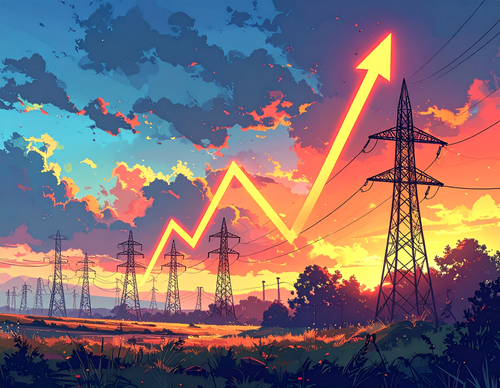The world is on the cusp of a new electric era. Whereas oil and gas previously formed the basis of industry, electricity will be the key energy source of the future: for digitalisation, mobility, industry and AI. “Global electricity demand is rising faster than many governments are willing to admit – especially the German government“, says Markus W. Voigt, CEO of the aream Group.
A look at the United States shows what lies ahead for us. For decades, energy was taken for granted as cheap there. But now many Americans are taking a closer look at their electricity bills. Prices are skyrocketing, especially in states with rapidly growing digital industries. In Missouri, North Dakota and New Jersey, electricity costs rose by 30 to 38 per cent last year, and in some cases even more. The reason: demand for electricity is growing faster than supply.
The most important driver of this increase is artificial intelligence. According to Goldman Sachs, data centres worldwide will need around 165 per cent more electricity by 2030 than they do today. The large US tech companies alone are investing over 700 billion dollars in new data centres – energy-hungry facilities that have to run day and night. The electricity demand of these infrastructures is growing exponentially. In the US, the share of electricity consumption by data centres is expected to more than double from around four per cent today to 2030.
But AI is only part of the story. Entire sectors of the economy are becoming electrified worldwide. Factories are replacing gas burners with electric melting furnaces, truck fleets are being converted to battery power, and private households are installing heat pumps. Electricity is becoming the backbone of the economy. ”But this backbone is being massively and deliberately weakened in Germany”, says Voigt.
”So it comes as no surprise that German Economics Minister Katherina Reiche recently predicted a significantly slower increase in electricity demand”, says Voigt. According to new government assumptions, electricity consumption is expected to be around 680 terawatt hours (TWh) by 2030 – barely higher than earlier estimates from 2021. The Federal Ministry of Economics is thus assuming growth of only around 15 per cent, while independent studies – such as those by Agora Energiewende and the Fraunhofer Institute – consider 850 to 900 TWh to be realistic.
”This discrepancy is more than a technical footnote; it is a political decision”, says Voigt. After all, setting the demand too low creates less pressure to expand renewable energies. ”With figures that are too low, it is easy to argue that the existing expansion targets are sufficient”, says Voigt. In reality, however, this means too little wind power, too little photovoltaics, too little storage, too little electricity for a growing economy. And to make matters worse, prices are also rising. The USA shows that when electricity demand rises faster than generation, prices skyrocket. Companies and private households bear the burden. ”It would be fatal to repeat the same mistake in Germany”, says Voigt.
Electricity demand is not a theoretical scenario. AI-supported production, electromobility, heat pumps and digitised infrastructure require enormous amounts of energy. Only accelerating expansion can ensure that this energy remains clean, affordable and available. This includes faster and increased approvals for wind and solar power, modernisation of the grids, construction of storage facilities and linking of sectors. ”What is needed is accelerated planning, investment security and an energy policy that is not based on old assumptions but on real demand”, says Voigt.
PRESSEKONTAKT:
Leandra Kiebach
T: +49 (0)211 30 20 60 4-2
E: lk@aream.de
